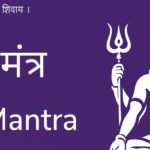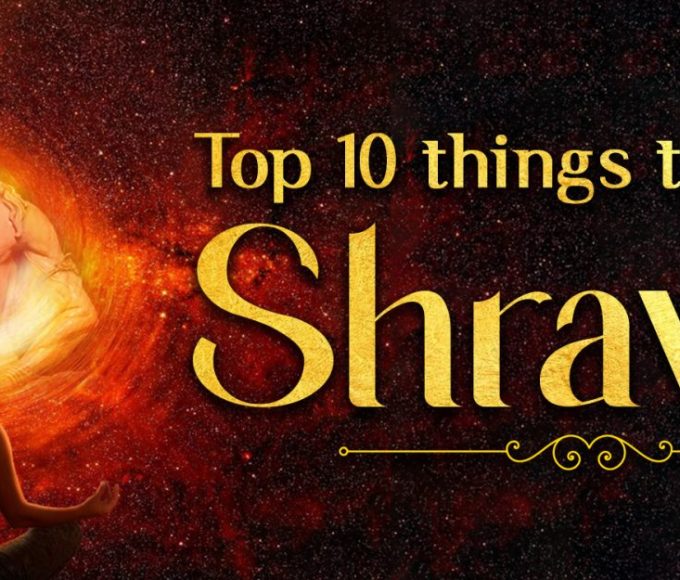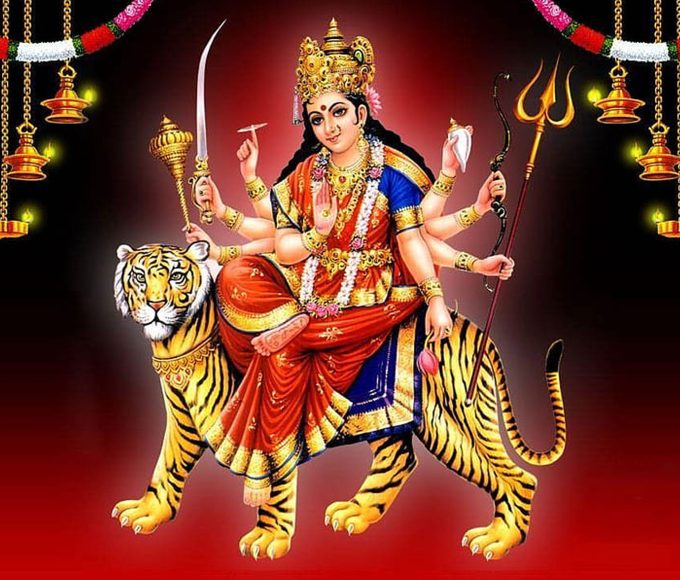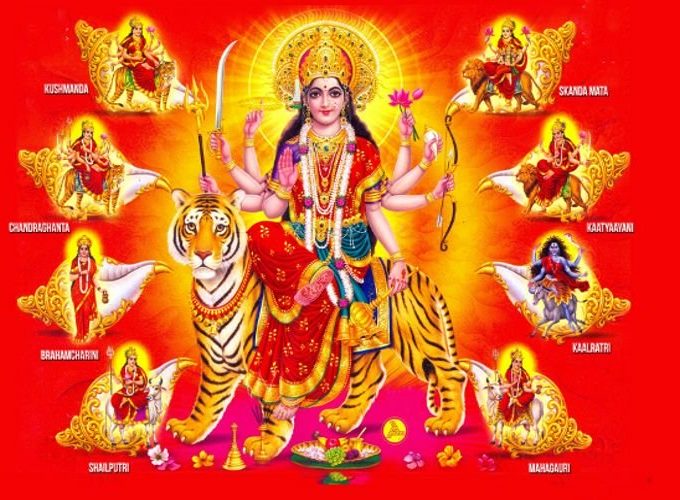Lord Ganesha is a prominent Hindu deity who is widely revered as the remover of obstacles, the patron of arts and sciences, and the deva of intellect and wisdom. He is also known by various other names such as Ganapati, Vinayaka, and Vighnaharta.
The Meaning of Ganesha
The god of wisdom, knowledge, and new beginnings, Ganesha, is derived from two Sanskrit words – “Gana” meaning group or collection, and “Isha” meaning lord or master.
As per Hindu mythology, Lord Ganesha is believed to be the son of Lord Shiva and Goddess Parvati. He is depicted with an elephant’s head and a human body, and is often seen riding a mouse or a rat. This unique depiction of Lord Ganesha is said to represent the unity of wisdom and strength, as well as the importance of humility.
Aspects of Lord Ganesha
Ganesha is the divine entity who governs all groups of atoms and energies in this universe. He is known as the supreme consciousness that permeates everything, bringing order to the chaos of existence.
Three important aspects of Lord Ganesha are:
Achintya: Beyond thought
Avyakta: Beyond expression
Ananta: Eternal
Why is Ganesha called Ekdanta?
Ganesha is known by several names, one of which is Ekdanta. The word Ekdanta is derived from two Sanskrit words: ‘Ek’ meaning one and ‘Danta’ meaning tooth. Ekdanta refers to Lord Ganesha having only one tusk or tooth.
There are different legends associated with why Ganesha has only one tusk. One of the most popular ones is the story of how Ganesha lost his tusk while guarding his mother’s privacy.
According to this legend, when Lord Shiva tried to enter Goddess Parvati’s chambers, Ganesha, who was guarding the entrance, stopped him. In the ensuing scuffle, Ganesha’s tusk was broken off. Another legend says that Ganesha broke his tusk to write the Mahabharata when the sage Vyasa asked him to do so. Ekdanta is considered a symbol of Ganesha’s sacrifice, wisdom, and ability to overcome obstacles.
The Essence of Lord Ganesha
Lord Ganesha, the elephant-headed God, is widely revered and worshipped by Hindus. While his unique form may catch one’s attention, the true essence of Ganesha is beyond physical appearance. In fact, Adi Shankara beautifully brings out the essence of Ganesha by stating that his form is just a symbol of the qualities of the Divine.

Ganesha is often described as ‘Ajam Nirvikalpam Niraakaaramekam’, which means that he is unborn (Ajam), attributeless (Nirvikalpa), and formless (Niraakaar). These qualities symbolize the consciousness that is omnipresent and all-pervading.
In essence, Ganesha represents the same energy that is responsible for the creation and sustenance of the universe. He is the energy from which everything manifests and into which everything dissolves. Thus, his worship and reverence signify the acknowledgment of the Divine power that governs and sustains life.
The Birth Story of Lord Ganesha
The story of Lord Ganesha’s birth is a popular one that explains how he got his elephant head. According to the legend, Parvati, Shiva’s wife, created a boy out of the dirt on her body while celebrating with Shiva. She asked the boy to keep watch while she bathed.
When Shiva returned, he found the boy guarding the door and didn’t recognize him. Enraged, Shiva chopped off the boy’s head and entered. Parvati was shocked and explained that the boy was their son. She pleaded with Shiva to bring him back to life.
Shiva then instructed his helpers to bring the head of someone who was sleeping with their head pointing towards the north. The helpers got the head of an elephant, and Shiva affixed it to the boy’s torso, thus giving birth to Ganesha, the elephant-headed God.
This story teaches us about the importance of communication and understanding, as well as the power of divine intervention. It also highlights Ganesha’s role as a remover of obstacles and the patron of new beginnings.
Interesting Facts about the Birth Story of Lord Ganesha
Why is dirt on Parvati’s body significant in the story of Lord Ganesha’s birth?
In the story of Lord Ganesha’s birth, Parvati becoming dirty signifies that celebration can easily become Rajasik or feverish, and can take one away from their center. Dirt is symbolic of ignorance, and Shiva represents innocence, peace, and knowledge.
Was Shiva really short-tempered to cut off Ganesha’s head?
When Ganesha obstructs the path of Shiva, it symbolizes that ignorance, which is an attribute of the head, does not recognize knowledge. Then knowledge has to overcome ignorance, which is the symbolism behind Shiva chopping off the boy’s head.
Why does Lord Ganesha have an elephant head?
Lord Ganesha is depicted with an elephant head to symbolize the qualities of the Divine, such as fearlessness, authority, endurance, strength, and courage. The elephant is also the only being that can perform all its functions with its trunk, which symbolizes the perfect balance between knowledge and action. When worshiped, Lord Ganesha helps imbibe these qualities into one’s consciousness.
Symbolism and Significance of Lord Ganesha
Lord Ganesha is not just a deity with an elephant head, but is also a symbol of several spiritual principles. Here are some of the significant symbolisms associated with Lord Ganesha:
Big belly: Lord Ganesha’s large belly represents generosity and the acceptance of all that life has to offer. It symbolizes the ability to digest both the sweet and sour experiences of life.
Upraised hand: The upraised hand of Lord Ganesha depicts protection and reassurance to his devotees, signifying “Fear not, I am with you.” His lowered hand represents giving and an invitation to surrender.
Single tusk: The single tusk of Lord Ganesha signifies one-pointedness and the ability to focus on a single goal. It also represents the importance of retaining the good and rejecting the bad.
Ankusa and Paasa: Lord Ganesha carries the Ankusa (a goad used to train elephants) and the Paasa (a noose) in his hands. These symbolize awakening and control, respectively. Spiritual awakening releases a lot of energy, and it is important to have proper control over it to avoid it going astray.
Mouse as his vehicle: The mouse that carries Lord Ganesha represents the mind and its tendencies. The mouse’s ability to nibble through ropes and break free symbolizes the power of the mantra, which can cut through ignorance and lead to ultimate knowledge.
Lord Ganesha’s physical appearance and the symbols associated with him hold deep spiritual meanings and life lessons. By understanding these, one can gain a better appreciation and insight into this beloved deity.
Eight holy shrines of Lord Ganapati
Just as there are twelfth Jyotirlingas for the worship of Lord Shiva & 51 Shakti peeths for the worship of Shakti, in the same way there are eight holy shrines of Lord Ganapati.

Just as there are twelfth Jyotirlingas for the worship of Lord Shiva & 51 Shakti peeths for the worship of Shakti, in the same way there are eight holy shrines of Ganapati, which are called Ashtavinayak. All these eight holy places of Lord Ganpati are located in Maharashtra.
1. Mayureshwar Temple, Pune
This holy shrine of Ganpati is situated at a distance of about 75 km from Pune city. It is believed that Lord Ganesha killed a demon named Sindhurasur riding on a peacock at this place, hence this temple is called Mayureshwar.

2. Siddhivinayak Temple, Ahmednagar
This holy shrine of Ganapati is situated on the banks of Bhima river in Ahmednagar, Maharashtra. It is believed about this Siddha temple of Ganapati, built on the top of the mountain, that Lord Vishnu had attained siddhis at this holy place once. One has to travel a mountain to circumambulate this temple of Ganapati.

3. Ballaleshwar Temple, Pali
This Siddha temple of Ganapati is situated at a place called Pali in Colaba district of Maharashtra. This temple of Ganapati is named after his exclusive devotee Ballal. In the Ballaleshwar Ganapati temple, the rays of Lord Sun fall directly on his idol in the morning.

4.Varadvinayak Temple, Raigad
The Varadvinayak Temple of Lord Ganesha is located at a place called Kolhapur in Raigad. It is believed that every person who visits this temple of Ganpati gets a boon of fulfillment of his wishes.

Also read-: Top 10 Lord Shiva Temples in India that every devotee must visit once
5.Chintamani Temple, Pune
This temple of Lord Ganesha, who defeats all the worries of his devotees, is located in Theur village, 25 km from the city of Pune in Maharashtra. This temple was established by his great devotee Morya Gosavi.

6.Girijatmaj Ashtavinayak Temple, Pune
This Siddha temple of Lord Shri Ganesh is situated in Lenyadri village at a distance of about 100 km from Poona. The Girijatmaj temple has been built by excavating the mountain.

7. Vigneshwar Ashtavinayak Temple, Ozar
The temple of Lord Vigneshwar is located in Junar area of Ozar district, about 85 km from Pune. It is believed that Ganapati had once blessed the people of this region to live in peace by killing a demon named Vighnasur. The darshan of this idol of Lord Ganapati removes all obstacles.

8.Maha Ganapati Temple, Rajangaon
Mahaganpati Temple is located at a distance of 55 km from Pune in Rajangaon. This temple of Ganapati is quite ancient, which is believed to be between the ninth to the tenth century. Here Ganapati is also known as Mahottakat.

Rudraksha related to Lord Ganesha
8 Mukhi Rudraksha
Eight Mukhi Rudraksha is blessed by Lord Ganesha. As per Shastras, wearing the 8 Mukhi Rudraksha is believed to bring victory in life and transform the mindset of adversaries. The bead enhances analytical and logical skills, removes obstacles, and ensures the successful completion of work. It is also known to offer protection from invisible enemies and hostile forces, thus ensuring a hurdle-free existence and leading to definite success. Additionally, wearing this Rudraksha is said to enable the wearer to emerge as a true winner.

Ganesh Rudraksha
The Ganesh Rudraksha is identified by the trunk-like stem present on the bead and is known to bestow its wearer with the grace of Lord Ganesha, according to the Shastras. This Rudraksha is believed to remove obstacles, bring good fortune and prosperity, and bless the wearer to initiate new endeavors. It acts as a guide and provides blessings in all aspects of life. Since Lord Ganesh is the deity of wisdom and intellect, it is considered beneficial for students based on the feedback received from our customers.

Ganesh Sankashti
Ganesh Sankashti is a Hindu festival dedicated to the worship of Lord Ganesha. It is celebrated on the fourth day after the full moon day (Purnima) of each month in the Hindu calendar. This day is also known as Sankatahara Chaturthi or Sankata Ganesh Chaturthi.
On this day, devotees observe a fast and offer prayers to Lord Ganesha to seek his blessings and remove any obstacles in their lives. The fast is broken after the moon rises at night. Special pujas and rituals are performed in Ganesha temples, and devotees offer modak, a sweet delicacy made of rice flour, jaggery, and coconut, which is believed to be Lord Ganesha’s favourite food.
Ganesh Sankashti is considered to be an auspicious day to start new ventures, make important decisions, and seek blessings for success and prosperity. It is believed that by observing this fast with devotion and sincerity, one can overcome all the obstacles in life and attain happiness and fulfilment.
Rahu and Ganesha
Rahu is known as the shadow planet and is considered malevolent. It is believed that Rahu creates obstacles and challenges in one’s life, causing stress and anxiety. On the other hand, Lord Ganesha is considered as the remover of obstacles and the God of new beginnings.
According to some beliefs, performing certain rituals and prayers to Lord Ganesha during the Rahu Kaal, a specific time period dedicated to Rahu, can help in mitigating the malefic effects of Rahu. This is because Lord Ganesha’s blessings can help one overcome obstacles and challenges posed by Rahu.
It is also believed that Rahu’s enmity towards Lord Ganesha stems from an incident in which Rahu tried to consume the nectar of immortality during the churning of the ocean (Samudra Manthan). Lord Vishnu, in order to prevent Rahu from consuming the nectar, decapitated him with his Sudarshan Chakra. However, Rahu’s head had already consumed the nectar and become immortal. From that day, Rahu developed a grudge against Lord Vishnu and his avatars, including Lord Ganesha.
Overall, the relationship between Lord Ganesha and Rahu is one of enmity, with Lord Ganesha being seen as the solution to overcome the obstacles and challenges posed by Rahu.
Ganesh Sankashti Maha Puja
We at Rudralife are organizing a Ganesh Sankashti Maha Puja on 8th May 2023. It will be conducted by 8 Pandits. This Puja is especially beneficial for those who are looking to overcome any hurdles in life.
We encourage devotees to take the Sankalp of any students or children in their family in order to receive blessings of Lord Ganesha. Those with a malefic Rahu should take part in this Puja.
Puja Description: Swasti Vaachan, Sankalp, Kalash Pujan, Gauri and Ganesh Pujan, Pradhan Sthapan, Ganesh-Lakshmi-Shiva Mahabhishek, Ganesh Atharvashirsha Path (101 Times), Durvaarchan, Brahman Bhojan, Vachan and Mangal Aarti, Visarjan, Ashirvachan.


















Found your post interesting to read. Good Luck for the upcoming update.This article is really very interesting